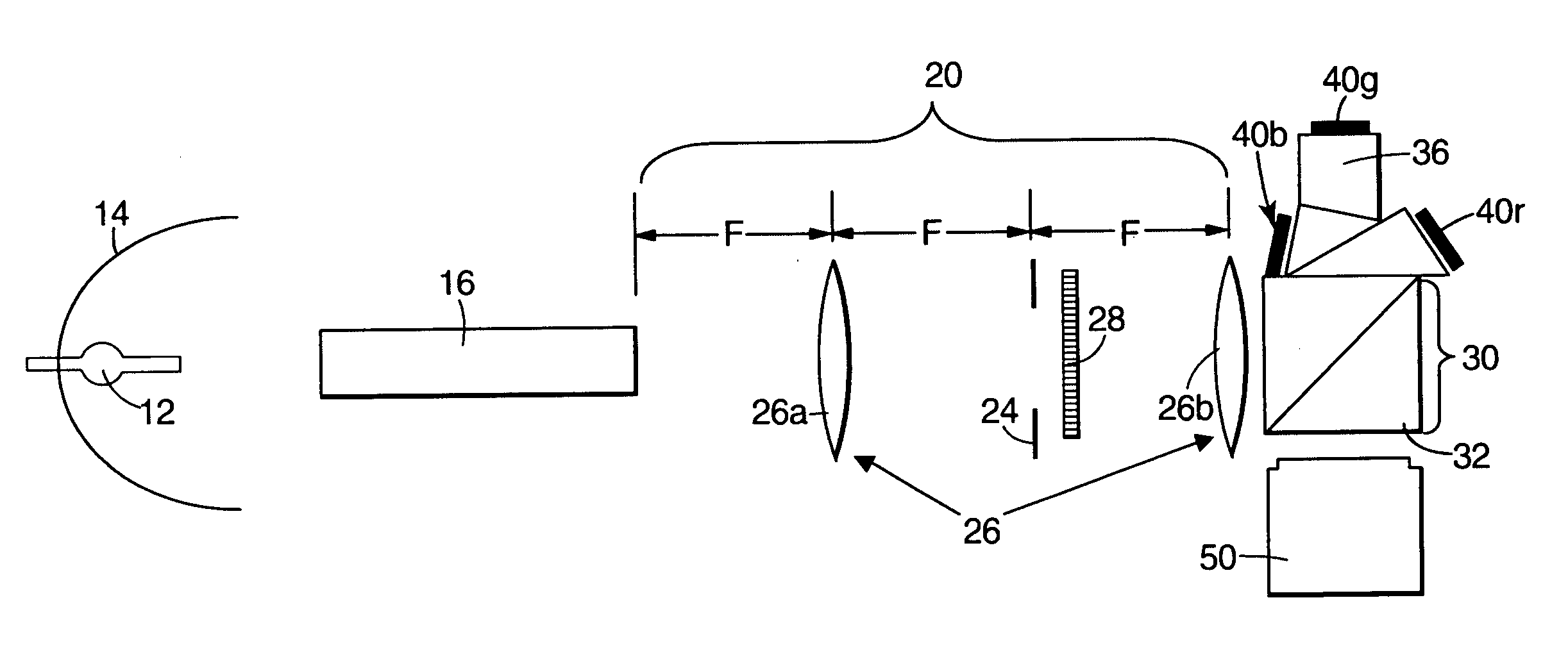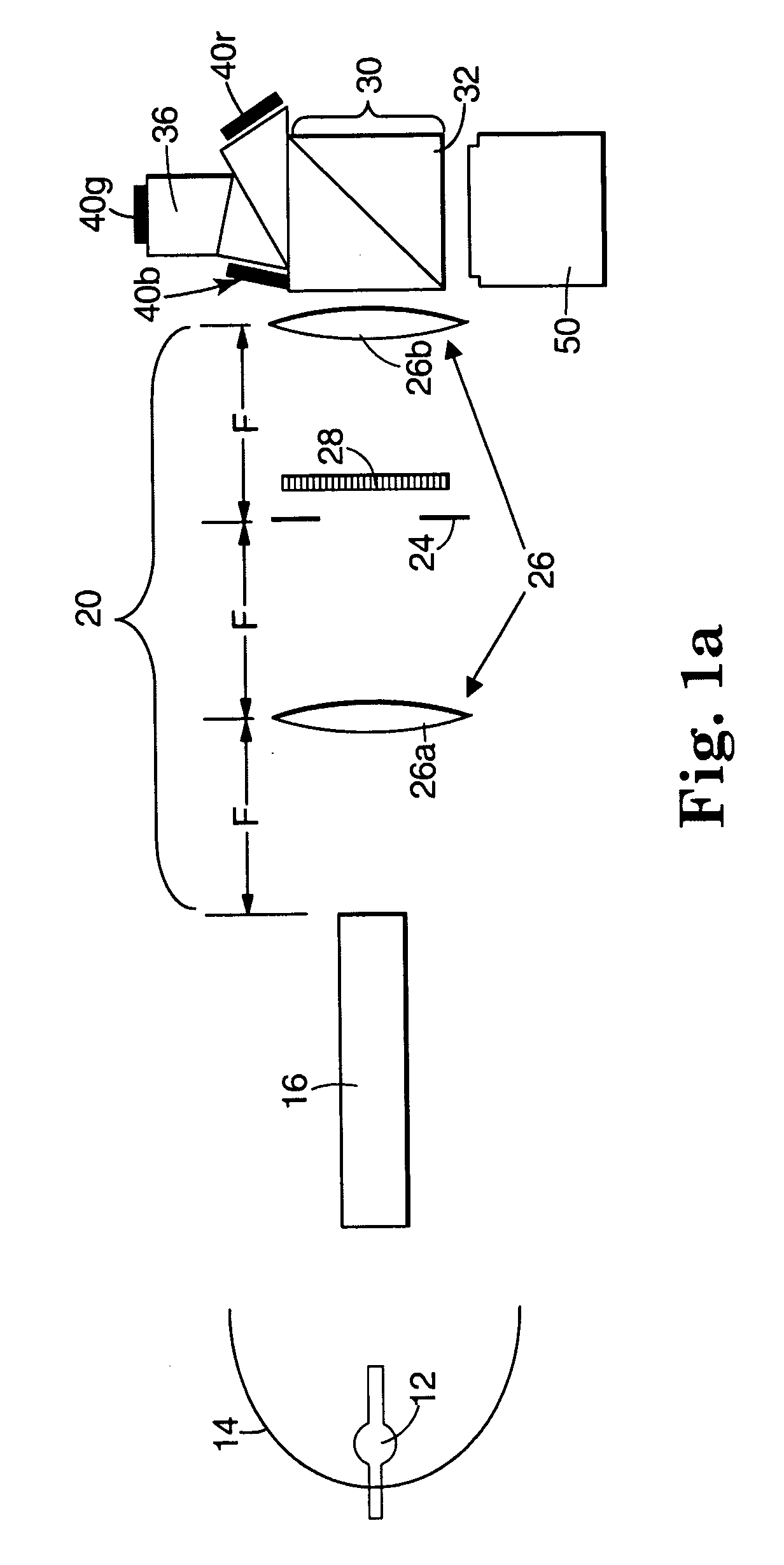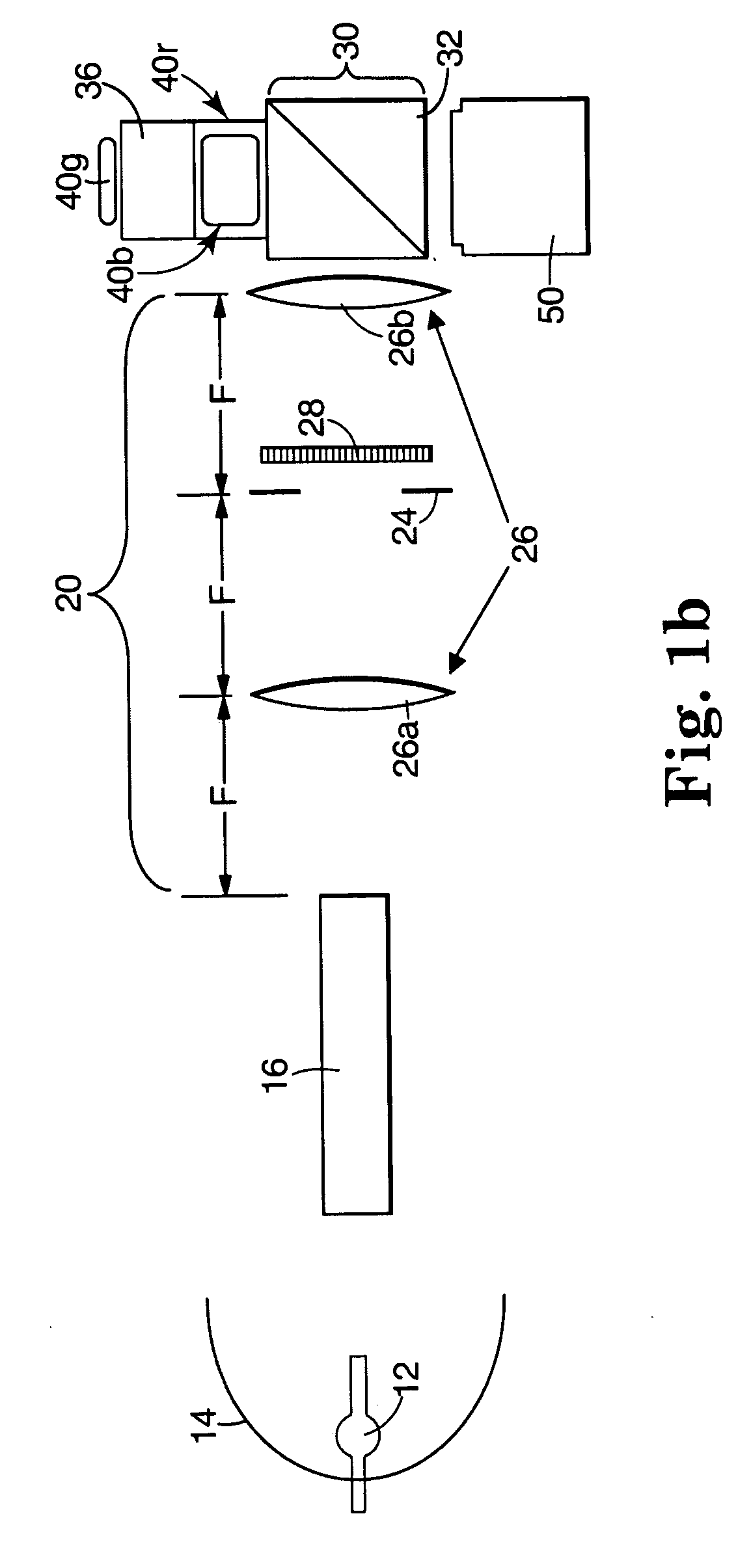Reflective LCD projection system using wide- angle Cartesian polarizing beam splitter and color separation and recombination prisms
a projection system and wide-angle cartesian technology, applied in the direction of polarising elements, lighting and heating apparatuses, instruments, etc., can solve the problems of spectral non-uniform leakage, inefficient and expensive lcos imagers, and inefficient macneille pbs's, etc., to increase the size, weight and cost of color prisms, and the smallest and lightest projector configuration
- Summary
- Abstract
- Description
- Claims
- Application Information
AI Technical Summary
Benefits of technology
Problems solved by technology
Method used
Image
Examples
example 1
Performance of APF Cartesian PBS with no Color Prism
[0053] Data was first taken to establish the baseline performance of the APF PBS, the mirror simulation of an imager in its dark state, and the mirror with quarter wave film simulation of an imager in its bright state, along with the overall contrast capability of the system of FIGS. 1a and 1b (without a color prism). The resulting data is shown in FIGS. 3 and 4 for two different samples of APF Cartesian PBS. The data indicates a very high level of contrast even vis-a-vis the earlier reported performance of plate-type Cartesian PBS systems. FIG. 3 shows the results as a function of wavelength of light at f / 2, while FIG. 4 indicates results as a function of f / #. In both cases, the PBS film was contained in a cubic prism made of BK7 glass. In FIG. 4, the data was taken both with and without an optional clean-up polarizer just before the projection lens, to remove stray light due to a slight haze in the PBS prism. The optional clean-...
example 2
Performance of APF Cartesian PBS and Color Prism with Parallel Tilt Axes
[0054] If the color prism is added to the system, but the imagers continue to be simulated by mirrors and quarter wave films as before, then the effects of the depolarization cascade may be assessed. To evaluate these effects, the color prism was designed to work optimally with light that is perfectly y-polarized. The color prism was designed for use at f / #'s down to 2.8, with the PBS and the color prism having parallel tilt axes. Versions of the color prism made of BK7 and of SK5 glass have been used in this work, but the present example focuses on the BK7 glass prism, which has an index of refraction matching that used in the design work. It is important to note, that the color prism was designed to work with perfectly y-polarized light, such as that presented by a Cartesian polarizer. It was specifically not designed to compensate the polarization impurities introduced by a MacNeille PBS. (Designing the colo...
example 3
Performance of APF Cartesian PBS and Color Prism with Perpendicular Tilt Axes
[0058] Because the Maltese band for the PBS itself is so deep and broad, we expect that there may be a minimal degradation in contrast resulting from the crossing of the Maltese band due to the color prism with that due to the PBS. In this case, rather than figuratively overlaying the narrow horizontal Maltese band of the color prism over the broad horizontal Maltese band of the PBS, a vertical Maltese band is overlayed due to the color prism cross-wise over the broad horizontal Maltese band of the PBS. Due to the extremely broad nature of the Maltese band of the APF PBS (the pupil image contains rays with polar angles out to about 14°) the degradation in contrast resulting from this crossing of bands is small. This is quite different from the case for conventional MacNeille PBS components.
[0059]FIG. 8a demonstrates the performance obtained when the color prism is rotated so that s-polarized light from th...
PUM
| Property | Measurement | Unit |
|---|---|---|
| angles | aaaaa | aaaaa |
| angle of incidence | aaaaa | aaaaa |
| cone angle | aaaaa | aaaaa |
Abstract
Description
Claims
Application Information
 Login to View More
Login to View More - R&D
- Intellectual Property
- Life Sciences
- Materials
- Tech Scout
- Unparalleled Data Quality
- Higher Quality Content
- 60% Fewer Hallucinations
Browse by: Latest US Patents, China's latest patents, Technical Efficacy Thesaurus, Application Domain, Technology Topic, Popular Technical Reports.
© 2025 PatSnap. All rights reserved.Legal|Privacy policy|Modern Slavery Act Transparency Statement|Sitemap|About US| Contact US: help@patsnap.com



